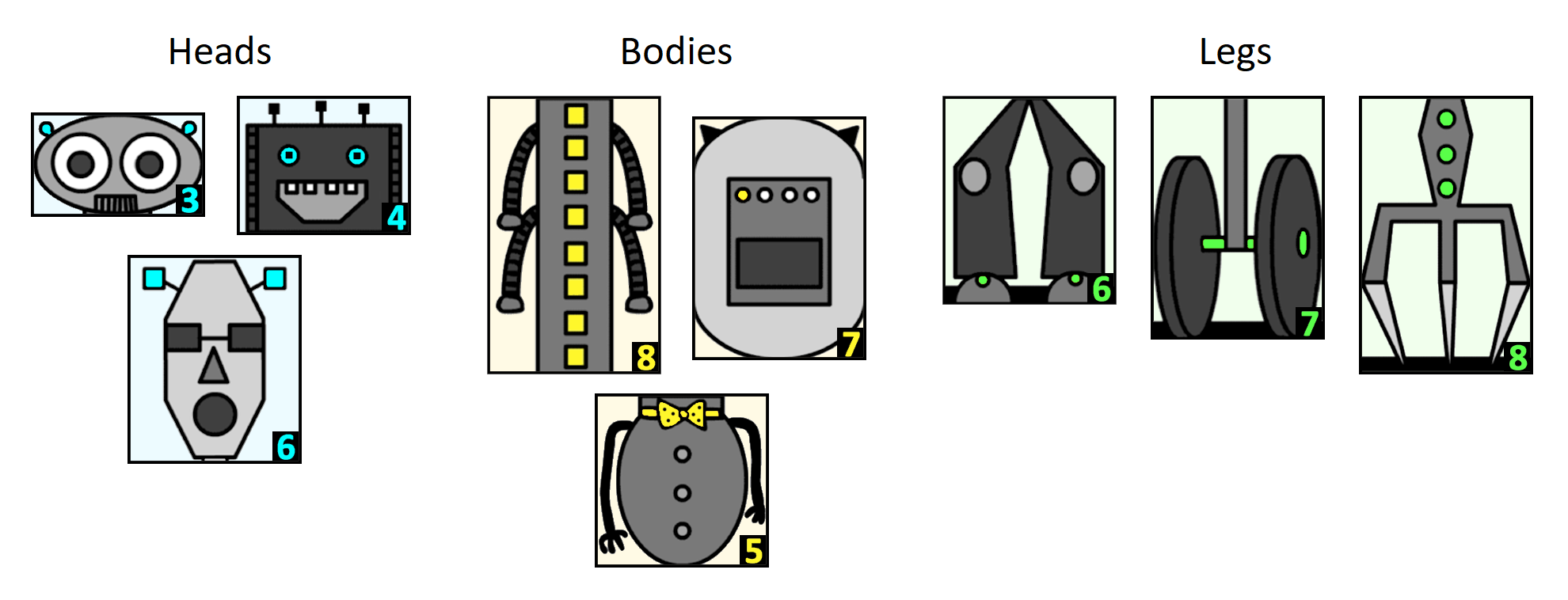Copyright © University of Cambridge. All rights reserved.
'Robot Monsters' printed from https://nrich.maths.org/
Show menu
Why do this problem?
This problem involves measurement that really focuses on number work - addition, ordering numbers and combinations. Manipulating the pictures can also help pupils to explore the different combinations systematically.
Possible approach
This problem featured in an NRICH Primary webinar in September 2021.
You could start by showing the whole group the pictures in the problem by displaying the interactivity on the board. Explain that each robot monster needs a head, a body and a pair of legs. You could ask how tall the robot would be using a certain combination of head, body and legs, which you (or a child) could drag in place on the screen. Some learners might count squares to find the height, some might use the ruler (which can be dragged horizontally), some might add the three measurements. Spend some time sharing the different methods your class has used. (If you click on the Settings purple cog, you have the option to hide the ruler if you prefer.)
Once the group has got the idea of a robot monster, you could introduce the challenges in the problem. You could have pictures from the printable sheet available for pairs to use should they wish. If possible, you could also have tablets/computers on hand so learners can choose to use the interactivity themselves. It is helpful if the children can work in pairs so that they are able to talk through their ideas with a partner.
At the end of the lesson you could discuss the tallest and shortest robots as a whole group, and all the different combinations they have found. You can use the interactivity (or pieces printed onto card and fixed onto the board) to illustrate the different combinations, and to draw out ways of working systematically so that you can be certain all solutions have been found.
Key questions
If a robot monster is going to be as tall/short as possible, which head will you choose?
If a robot monster is going to be as tall/short as possible, which body and set of legs will you choose?
Can you think of a good way to find all the different heights you can make?
Why not start with one head and look at all the different ways you could add body and legs to it?
How are you going to record what you have found out?
Possible support
Having the pieces printed out and/or using the interactivity will help all learners try out their ideas.
Possible extension
Learners could make their own robot monsters in different sizes or try Find the Difference or The Tall Tower.
